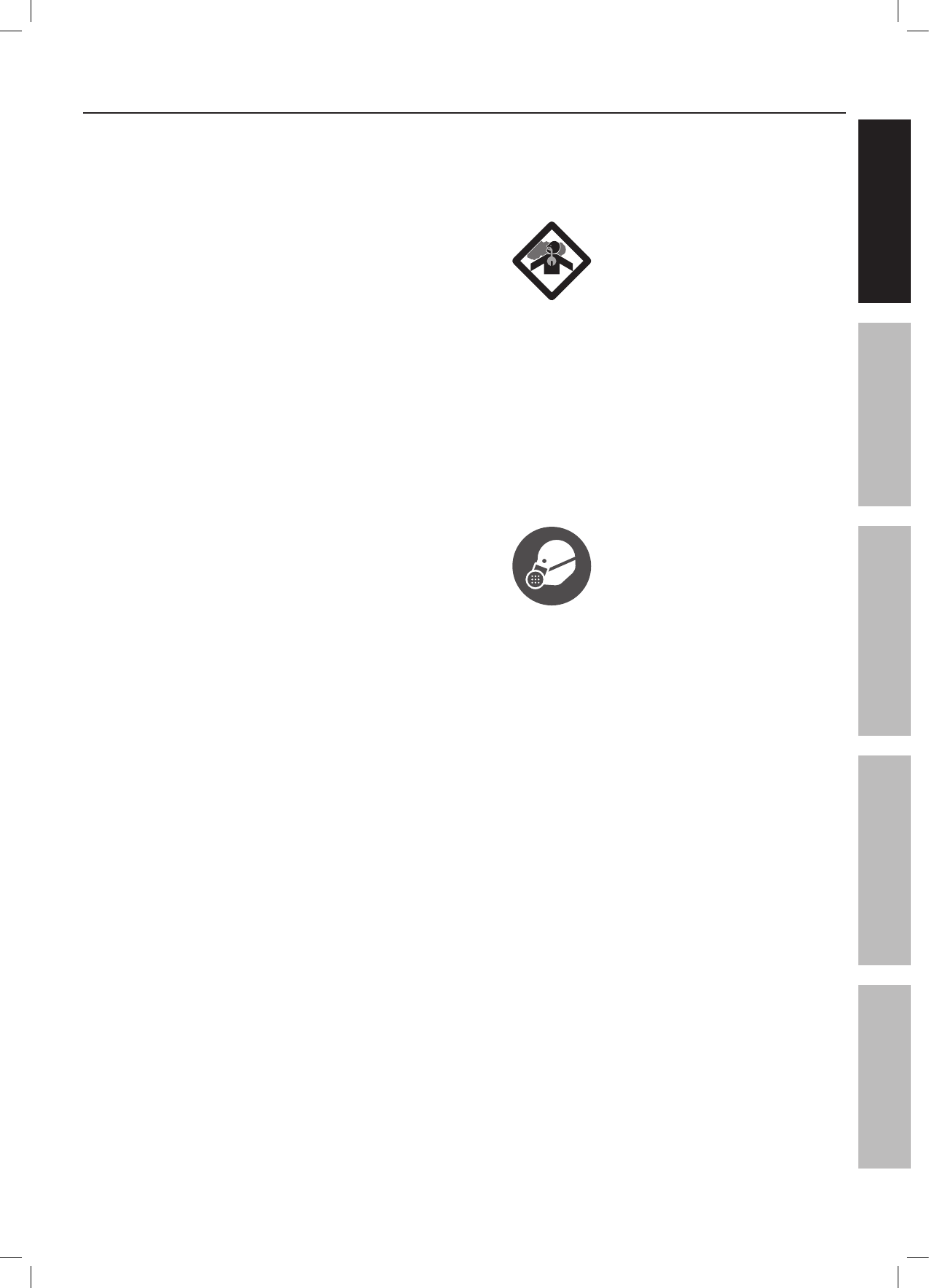
Page 3For technical questions, please call 1-800-444-3353.SKU 95136
SAFETYSERVICE OPERATIONTECHNIQUES SETUP
• Wear an approved head covering to protect
the head and neck. Use aprons, cape, sleeves,
shoulder covers, and bibs designed and
approved for welding and cutting procedures.
• When welding/cutting overhead or in conned
spaces, wear ame resistant ear plugs or
ear muffs to keep sparks out of ears.
8. Prevent accidental res. Remove any
combustible material from the work area.
• When possible, move the work to a location well
away from combustible materials. If relocation
is not possible, protect the combustibles with
a cover made of re resistant material.
• Remove or make safe all combustible
materials for a radius of 35 feet (10 meters)
around the work area. Use a re resistant
material to cover or block all open doorways,
windows, cracks, and other openings.
• Enclose the work area with portable re
resistant screens. Protect combustible
walls, ceilings, oors, etc., from sparks
and heat with re resistant covers.
• If working on a metal wall, ceiling, etc.,
prevent ignition of combustibles on the other
side by moving the combustibles to a safe
location. If relocation of combustibles is not
possible, designate someone to serve as a
re watch, equipped with a re extinguisher,
during the cutting process and for at least
one half hour after the cutting is completed.
• Do not weld or cut on materials having a
combustible coating or combustible internal
structure, as in walls or ceilings, without an
approved method for eliminating the hazard.
• Do not dispose of hot slag in containers
holding combustible materials. Keep a re
extinguisher nearby and know how to use it.
• After welding or cutting, make a thorough
examination for evidence of re. Be aware
that easily visible smoke or ame may not
be present for some time after the re has
started. Do not weld or cut in atmospheres
containing dangerously reactive or ammable
gases, vapors, liquids, and dust.
• Provide adequate ventilation in work areas
to prevent accumulation of ammable gases,
vapors, and dust. Do not apply heat to a
container that has held an unknown substance
or a combustible material whose contents, when
heated, can produce ammable or explosive
vapors. Clean and purge containers before
applying heat. Vent closed containers, including
castings, before preheating, welding, or cutting.
• Only use compressed air to operate
the Plasma Welder/Cutter. Never use
other compressed gases. Don’t exceed
maximum PSI for this product as stated
on the specication table on page 6.
9. INHALATION HAZARD:
Welding and Cutting Produce
TOXIC FUMES.
Exposure to welding or cutting
exhaust fumes can increase
the risk of developing certain cancers,
such as cancer of the larynx and lung cancer.
Also, some diseases that may be linked to
exposure to welding or cutting exhaust fumes are:
• Early onset of Parkinson’s Disease
• Heart disease • Ulcers
• Damage to the reproductive organs
• Inammation of the small intestine or
stomach • Kidney damage
• Respiratory diseases such as
emphysema, bronchitis, or pneumonia
Use natural or forced air ventilation
and wear a respirator approved by
NIOSH to protect against the fumes
produced to reduce the risk of
developing the above illnesses.
10. Avoid overexposure to fumes and gases.
Always keep your head out of the fumes.
Do not breathe the fumes. Use enough ventilation
or exhaust, or both, to keep fumes and gases
from your breathing zone and general area.
• Where ventilation is questionable, have a
qualied technician take an air sampling to
determine the need for corrective measures.
Use mechanical ventilation to improve
air quality. If engineering controls are not
feasible, use an approved respirator.
• Work in a conned area only if it is well ventilated,
or while wearing an air-supplied respirator.
• Follow OSHA guidelines for
Permissible Exposure Limits (PEL’s)
for various fumes and gases.
• Follow the American Conference of
Governmental Industrial Hygienists
recommendations for Threshold Limit
Values (TLV’s) for fumes and gases.
• Have a recognized specialist in Industrial
Hygiene or Environmental Services
check the operation and air quality
and make recommendations for the
specic welding or cutting situation.
11. Keep hoses away from welding/cutting area.
Examine all hoses and cables for cuts, burns, or
worn areas before each use. If any damaged areas
are found, replace the hoses or cables immediately.
General Tool Safety Warnings (cont.)


















